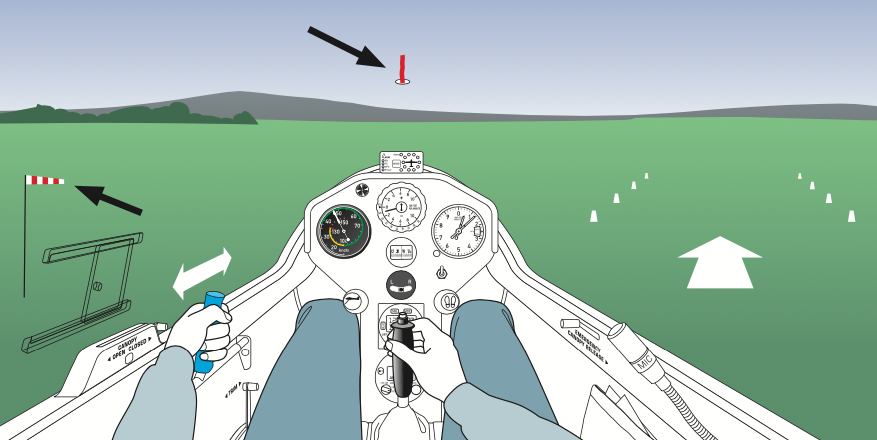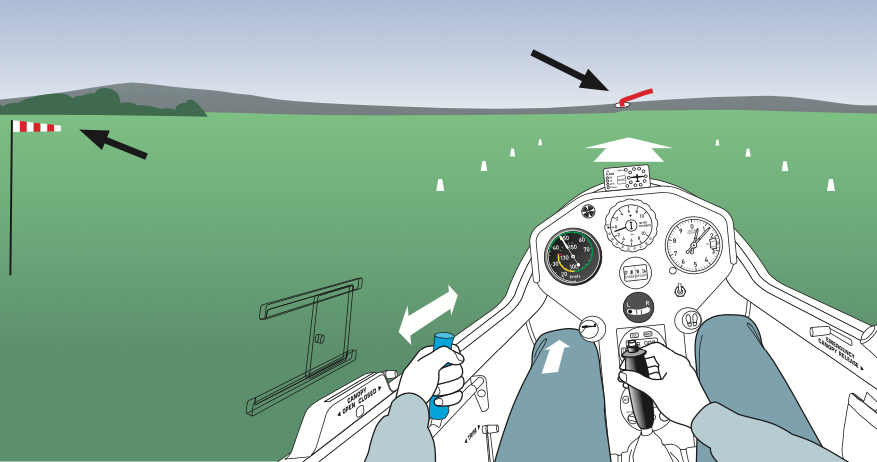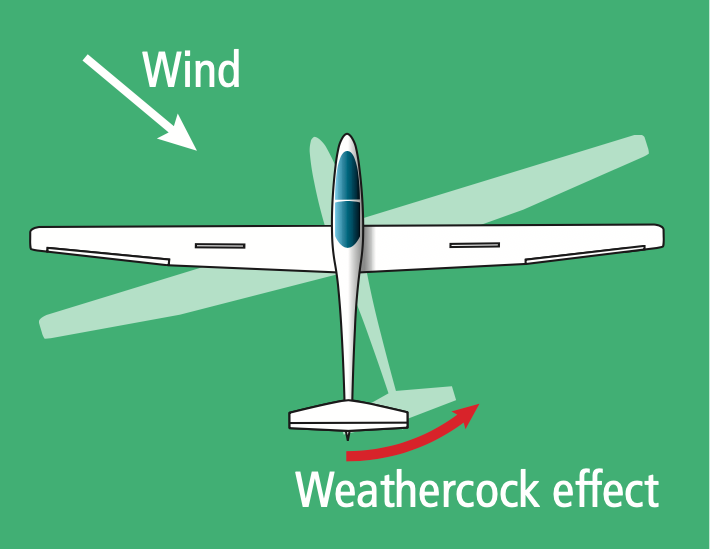4. LESSON 19 - CROSSWIND LANDING
Key points:
- Apply drift correction during final approach
- At round-out: get the timing right; straighten with rudder; wing level with aileron
- Keep straight during landing run
A crosswind landing adds more actions to those needed when the wind is straight ahead so the instructor will make sure that your normal landings are reasonable before teaching crosswinds.
CRAB TECHNIQUE
When approaching in a crosswind you need to make sure that your ground track matches the desired direction of landing, while flying straight, in coordinated flight, through the air. It can look a little strange, hence the name crab technique. It is done by pointing the glider’s nose enough into the wind while maintaining coordinated flight (1).
Shortly before or during round-out you need to use the rudder to point the glider in the direction of landing (2). Timing is key: too late and you will still be travelling sideways at touchdown; too early and the wind will drift you sideways off the desired landing track.
Do you remember the secondary effect of rudder? It applies here, too, so you will need some simultaneous opposing aileron to keep the wings level.
WING DOWN TECHNIQUE
An alternative crosswind landing technique is wing down. It must not be used in a glider with limited distance between wing tips and the ground. It requires stick and rudder application different from normal coordination and so you should not attempt this technique unless you have first mastered recoveries from side-slips (Lesson 4.22) at height.
To avoid being drifted off by the crosswind, you have to keep the wing tip that is facing the wind a little bit lower. The longitudinal axis of the glider has to be aligned with and kept in the direction of landing by applying some opposite rudder. When using this method you do not need to align the longitudinal axis just before touchdown (because you have already done this). This technique results in a final approach being flown slightly uncoordinated, so the yaw string will not be straight. Side-slipping the glider causes some additional drag.
BOTH METHODS
Once straightened with wings level into the landing direction, hold off and touchdown are normal, but be aware that the wind will try to weathervane the glider. You will have to apply rudder to keep straight.
Just like any other landing, select full airbrake and apply the wheel brake - gently! Gradually bring the stick back all the way. Use ailerons, all by themselves, to keep the wings level for as long as possible.





